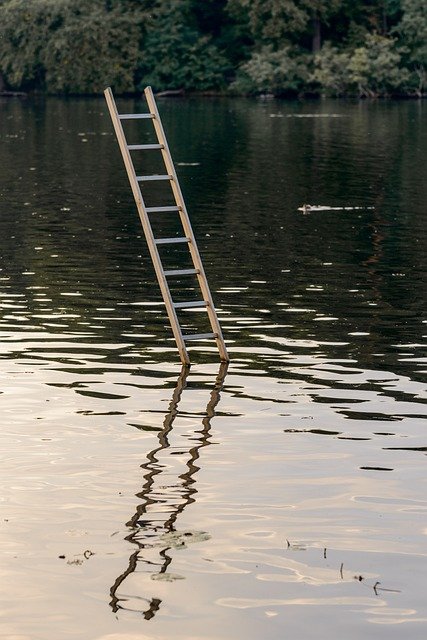
Floods are one of the most devastating natural disasters, causing widespread destruction to property, infrastructure, and most tragically, lives. Whether it’s a river overflowing, heavy rainfall leading to flash floods, or storm surges from hurricanes, floods can strike unexpectedly and with little warning. In such critical situations, preparation is key to minimizing damage and ensuring the safety of yourself and your loved ones. One often-overlooked piece of advice when facing imminent floods is the phrase: “Pull up the ladder when the flood comes.” But what does this metaphor mean, and why is it essential in flood preparedness?
This article delves into the meaning of “pulling up the ladder” during a flood, its practical implications, and the best safety measures to implement when a flood is imminent. By understanding and acting on the advice behind this metaphor, you can significantly reduce risks and protect both your property and personal safety.
Understanding “Pull Up the Ladder When the Flood Comes”
At first glance, the phrase “pull up the ladder when the flood comes” might seem like a metaphorical saying that holds little immediate relevance. However, when interpreted properly, it reflects a critical safety principle in flood-prone areas: take proactive steps to prevent further damage, avoid unnecessary risks, and safeguard your home, loved ones, and assets.
Historically, the “ladder” can be seen as a means of escape or a tool that offers access to higher ground. In this context, pulling up the ladder is a metaphor for securing your means of escape or ensuring that the floodwaters do not compromise your safety or that of others. It also suggests that during a flood, you need to close off avenues that might put you at risk, including potential routes for water to enter your home or property.
The Importance of Flood Preparedness
Floods do not wait for ideal conditions to strike. They can occur at any time, with rising rivers, flash floods, and coastal surges often becoming catastrophic events with little warning. The importance of preparing your property and your family in advance cannot be overstated.
By “pulling up the ladder,” you are essentially making sure that every precaution is taken to avoid danger when floodwaters begin to rise. This proactive approach will help mitigate losses, reduce property damage, and most importantly, save lives.
How to Prepare for a Flood: Steps to “Pull Up the Ladder”

Flood preparedness involves both physical and logistical preparations. Taking the necessary steps well in advance can ensure that you’re ready to act when floodwaters begin to rise.
1. Create a Comprehensive Flood Emergency Plan
Before the flood season begins, it’s crucial to create a clear and actionable emergency plan. This plan should include:
- Escape Routes: Identify safe routes to higher ground, away from flood zones. Know multiple ways to leave your home or property in case certain routes become inaccessible due to rising waters.
- Meeting Points: Establish a designated meeting point outside of your immediate area where family members can regroup if separated.
- Communication Plan: Ensure that everyone in your household knows how to contact each other. Keep a list of emergency contacts and local authorities, such as the police and fire department.
- Evacuation Kits: Prepare a flood emergency kit that includes essential items like clean water, food, medications, flashlights, batteries, first-aid supplies, and important documents. Store these in a waterproof bag or container.
2. Elevate Your Property and Belongings
One of the most effective ways to minimize damage during a flood is by elevating your property and belongings above the anticipated flood level.
- Elevate Electrical Appliances: If you live in a flood-prone area, it’s essential to raise electrical appliances and outlets above potential flood levels. This can include refrigerators, washers, and even power sockets. Additionally, consider installing backflow valves on plumbing systems to prevent sewage from backing up into your home.
- Move Valuables: As part of your emergency preparation, elevate or move valuable items—such as documents, photographs, and electronics—to higher levels. If you don’t have upper floors, consider putting these items in waterproof containers to keep them safe from water damage.
- Use Sandbags: For added protection, sandbags can be used to block water from entering through doors, windows, or vents. Create barriers along entry points, and be sure to seal gaps in low-lying areas.
3. How to Prepare for a Flood

In areas where flooding is frequent or expected, flood barriers or levees can offer significant protection against rising water levels. These structures act as a physical barrier that redirects water away from vulnerable parts of your property.
- Flood Doors: Install flood-resistant doors with seals to prevent water from entering your home. These doors are designed to withstand high-pressure water and prevent significant flooding.
- Temporary Barriers: If permanent structures are not feasible, consider investing in temporary flood barriers. These can be quickly deployed around entry points to prevent floodwaters from getting inside.
4. Secure Your Ladder and Any Access Points to Upper Floors
If your home has a ladder (for instance, to access a roof or upper levels), now is the time to pull it up. Ensuring that no access is left for floodwaters to easily rise to higher levels will help safeguard those levels from damage.
- Remove Ladders: If your ladder is external, take it down before the floodwaters arrive. This is critical for keeping floodwaters from reaching higher floors where people may need to take refuge.
- Seal Entryways: Use heavy-duty seals on doors and windows that are accessible from the outside. Install flood-resistant barriers to prevent water from entering through the lower levels of the building.
5. Strengthen Your Roof and Foundation
Floodwaters may not just rise; they can exert pressure on your structure, potentially causing cracks and leaks. Reinforce your home’s foundation and roof to withstand water pressure.
- Roof Maintenance: Ensure that your roof is in good condition and free from any leaks that could let water in. If you live in an area prone to flooding, consider reinforcing your roof with flood-resistant materials that can better handle water damage.
- Foundation Inspection: Have your home’s foundation inspected regularly to ensure there are no weaknesses. Cracks in the foundation can allow water to enter your home, exacerbating the damage.
6. Stay Informed with Alerts and Weather Reports
When flood warnings are issued, it’s essential to stay informed and updated on weather conditions. Floods can escalate quickly, and real-time information can make the difference between life and death.
- Flood Alerts: Sign up for local flood alerts via text messages or apps. These systems provide real-time information on flood warnings, watches, and evacuation orders.
- Monitor Local News: Keep a battery-powered radio or a phone with a charged battery to monitor local weather reports. Know when to evacuate, and don’t wait until it’s too late.
7. Evacuate Early When Necessary
If a flood warning is issued or floodwaters are expected to rise quickly, evacuate as early as possible. Don’t wait for the water to reach your doorstep. Delaying evacuation can increase your risk of getting trapped, especially if roads become impassable.
- Use Flood-Resistant Vehicles: If evacuation is necessary, make sure to use vehicles that are flood-resistant or have been elevated to avoid floodwater damage.
- Listen to Authorities: Trust local emergency services and authorities for evacuation orders. If they advise you to leave your area, follow their instructions immediately.
8. Protect Your Property with Flood Insurance
In flood-prone areas, flood insurance is essential for mitigating financial losses. Standard homeowner’s insurance doesn’t cover flood damage, but a separate flood insurance policy can help protect your property.
- Check Your Coverage: Review your insurance policy to ensure it includes coverage for flooding. If you don’t already have flood insurance, contact your insurance provider to learn about your options.
- Document Your Property: Before a flood occurs, take an inventory of your possessions and document their condition with photos or videos. This can help in the claims process if you experience significant flood damage.
Conclusion: The Importance of Acting Early
The saying “pull up the ladder when the flood comes” serves as a poignant reminder to act quickly and decisively when flooding threatens. By preparing your home and taking proactive steps to safeguard your property and loved ones, you reduce the risk of damage and enhance your ability to weather the storm.
Floods are unpredictable, but with proper planning, timely action, and a focus on safety, you can protect yourself from this potentially catastrophic event. Remember, flood preparedness goes beyond physical protection—it also involves mental readiness, staying informed, and knowing when to act. By preparing in advance and following these safety measures, you’ll be ready when the floodwaters arrive.
RELATED POST
- Essential Safety Precautions When Using a Ladder
- Guide to Inspecting Ladders
- How to Prevent Injury When Raising or Lowering
- What Happens When You Walk Under a Ladder
Recent Posts
Maintaining clean gutters is essential for preventing water damage to your home, and choosing the best ladder for cleaning gutters can make the job much easier and safer. With so many options on the...
Best Ladder for Cleaning Caravan Roof: Top Picks for You Every Adventure!
Today we will discuss the best ladder for cleaning caravan roof. Cleaning caravan roofs is one of the crucial tasks.After many days, a caravan roof can get dirty by debris, dirt, and grime. These can...
